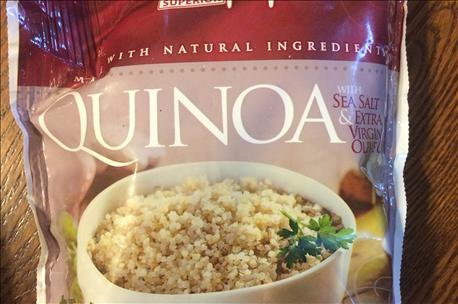
Two years ago, I didn’t know what quinoa was or even how to pronounce it (KEEN-wah). For those of you still in the dark, quinoa is technically not a grain but a seed, although it is used in virtually all the same ways as other whole grains.
It’s gone from being offered sporadically in specialty stores to prominently positioned on end caps in Sam’s Club.
And it’s gone from being the staple of poor communities to a high-dollar crop largely grown in South America — primarily, Peru and Bolivia.
The purple-flowered goosefoot plant has fast become a favorite for foodies with deep pockets, who are seeking organic, all-natural and gluten-free nutrition.

Interested in a super-seed?
The world’s recent love affair with quinoa — with a pleasant nutty taste and superfood qualities — can be traced back, in part, to the Food and Agricultural Organization of the United Nations’ (FAO) declaration of 2013 as “The International Year of the Quinoa.”
It was singled out as a food with “high nutritive value,” impressive biodiversity and an important role to play in the achievement of food security worldwide.
Being nutrient-dense with anti-inflammatory benefits, it’s been touted as a food to decrease or control Type 2 diabetes and reduce the risk of cardiovascular disease and cancer.
The health-conscious started gobbling it up and couldn’t get enough. Upscale sandwich shops often mix it in with their salads, soups and vegetables. (That’s what I’ve been told; I’m not usually a patron of shops with $15 sandwiches.)
It’s also great in breakfast courses. Personally, the way it looks and tastes reminds me of barley, which I happen to love — maybe with a dash of oatmeal flavor. You can make it sweet or savory, and it just soaks up the seasoning.
As worldwide demand has soared, so has the price, as the Andeans aren’t supplying enough of the seed they’ve cultivated for hundreds of years. Customs data from 2007 show 7.3 million pounds of quinoa imported into the U.S. That grew to 57.6 million pounds in 2012 and 68 million pounds in 2013. It’s still rising.
~~~PAGE_BREAK_HERE~~~
At my local Walmart, a 12-ounce box sells for about $5, depending on brand and whether it is traditional, red or black quinoa — all with slightly different tastes.
So, why hasn’t production moved elsewhere? It actually has to some degree and to the chagrin of Bolivian farmers whose annual incomes have more than doubled since the craze started.
What about U.S. quinoa?
So, why aren’t we growing it here in the United States? We did way back in the day, but the higher-yielding grain crops pushed out production. Today, very limited commercial quinoa production takes place in the United States, mostly in the Colorado Rockies and some production in California, Washington and Oregon. Quinoa likes an arid, cool climate, generally not over 90 degrees F.
And then there’s all the overhead involved in switching to a new crop and being able to justify it to the banker, especially when it’s speculated that the price may retreat or undergo several swings.
There are pests, diseases and sprouting issues to worry about, too. The research dollars and interest by large agribusinesses are just not there to solve these issues.
Several hundred varieties of quinoa exist, but more still needs to be done to bring production, of any degree, to the U.S. However, there is tremendous potential for quinoa.
With the FAO declaring 2016 the “International Year of the Pulses,” let’s hope consumers embrace and celebrate pulses — dry beans like pinto, black and chickpeas — as they have quinoa. U.S. dry beans growers are ready and eager to meet that demand!
About the Author(s)
You May Also Like






